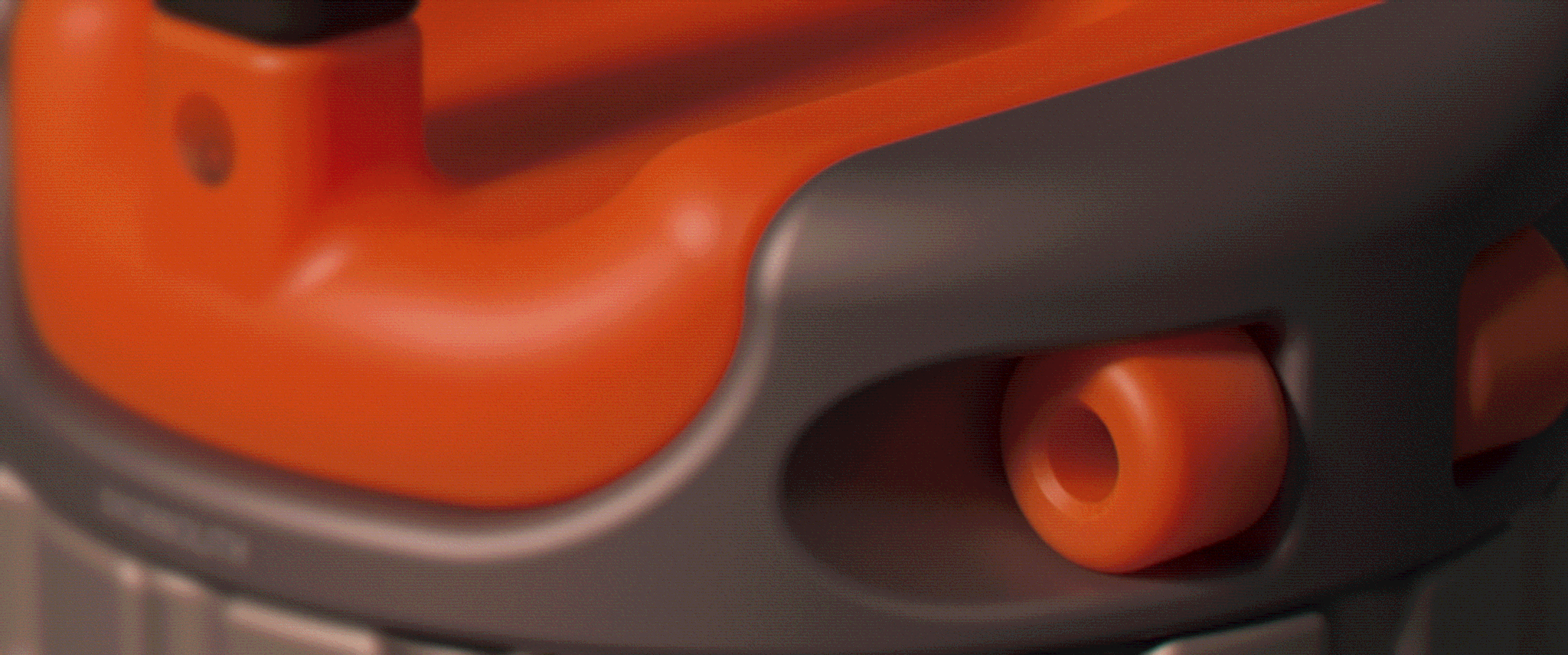Crystallised Blood
A few years ago, a valued IWTF chat participant alluded to the rather Negarestanian notion that 'plastic is the crystallised blood of the planet'. This precise formulation is only found in the tweets of Édouard Urcades (🌍~fabled-faster, a designer who previously worked with Tlon, and a respected acquaintance) and may have originated with him, potentially as one of a sequence of snowclones. I initially brushed this off as an amusing piece of theory-fiction, but the idea adhered to me, and I started thinking about it every time I designed or discarded a 3D-printed part, opened a wrapper, or grazed my skin against a piece of injection mold flashing. I started to pay greater attention to the tactility of different plastics, the way they catch and disperse light, their shape-memory, and the sublime loveliness of precision poly(etherimide).
It can be all too easy to dismiss utterances in the theory-fictional 'voice' as something trite and fungible. This voice is familiar to readers of the intellectual genealogy of the Cybernetic Culture Research Unit. Everyday substances as the lifeblood of dead gods, or synovial fluid evacuated from the joints of reality. Human civilisation as a biofilm upon the axis of an anorganic hyperwar between the Sun and the Earth's shrieking core. Capitalism as a thermodynamic phenomenon. A succession of authors identifying where precisely in prehuman (and even abiotic) history it all went wrong for us. This latter-most exercise is a tradition which can be traced back through Deleuze and Guattari at least as far as Spengler's problematisation of animal morphological and temporal directedness.
Azothic Horror
In Cosmic Dyspepsia, Thomas Moynihan (writing under a pseudonym, and better known for his elaborations upon Spinal Catastrophism) identifies Pepsi (the soft drink, to be clear) as an occult principle of teleoplexic capitalism. Pepsi is a sort of LCL of inhuman instrumentality in which every living thing will be simultaneously drowned and dissolved. He has the theory-fictional voice nailed, and is a truly engaging talent. But in elevating a soft drink to the darkly apocalyptic, has Moynihan perpetrated an elaborate satire? Does theory-fiction even admit satirisation?
These are probably the wrong questions to ask. Rather: does what first makes us laugh then make us think? Does it elicit Lovecraft's 'fear of the unknown' in what we previously took for granted? Does it raise the reader to a higher (if perhaps unhappy) consciousness? It may be the case that the tropes of theory-fiction are methodologically useful for alienating the reader from the familiar. If so, the broad applicability of these formulæ is a feature rather than a bug, and even the jokes, we find, must be taken seriously. Your mileage may vary.
Sacred Plastic
In the background fluff to 'Holy Living Creatures', I prophesise 'waterways choke[d] with 3D-printed firearms and single-use masturbation aids', which I think is a probable riverine evolution, if not already well underway. There exists a notion that petroleum (and by extension petrochemically-derived products, such as many plastics) are vastly undervalued in the long view of history: that the Earth's thermochemical capacitor can be (and is being) run dry far too quickly, and for the wrong reasons. If blood is liquid life, then Urcades' crystallised blood of the planet suggests a sacred plastic theory.
In this frame, it is perhaps the case that the loathsomeness of plastic waste and pollution has both extensive and intensive aspects. It is not just the fact of mountains of discarded plastic. This is the extensive aspect of waste. On closer inspection we see that those mountains are comprised of jammed assemblages of dragon dildos;¹ soy sauce fish; fidget spinners; Chris Brown disposable e-cigarettes; and the durable hands, feet, and grinning faces of slain and dismembered Labubus (a sort of dæmonic child substitute). This is the intensive aspect of waste. Raw plastic is raw potential, and potential is a promise often squandered. Onan was struck down by God for spilling his seed, but even that was a renewable resource.
It has been claimed (I think this claim was popularised by 'Persepolis') that during the Iran–Iraq war Iranian youth martyr brigades were given plastic 'keys to heaven'. Much attention has been drawn to the choice of material as particularly symbolic of the obscenity and human disposability of war. However, it is unclear that plastic is intrinsically profane, only that it can be profaned.
Wendell Berry said that "there are no unsacred places; there are only sacred places and desecrated places". Might the same be said of the materia comprising and inhabiting these places? The knack of alchemy is not to turn lead into gold. It is to understand that in some sense they are always already the same substance—subject to certain obscure transformations—and so are you. But what of plastic? Are we all figurines detached from God's sprue? Enough has been said about gold: it is past time for an esotericism of the polymers.
Mariya Takeuchi - Plastic Love
¹ Bad Dragon products are actually made from silicone (which is both a plastic and a polymer, but not petrochemically-derived (contingent on where you get your ethyl iodide from)). On this basis, their products are labelled 'Body-Safe', which is an interesting way of describing a dildo which is wider than my neck.
